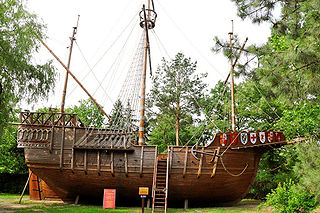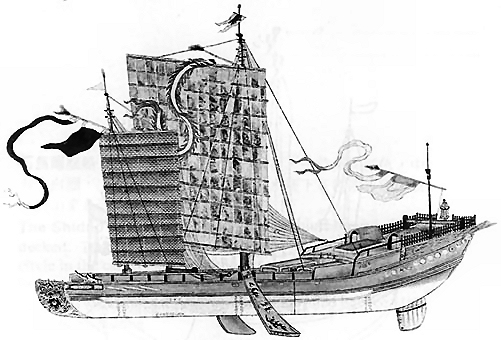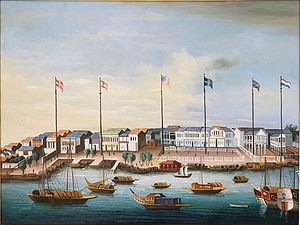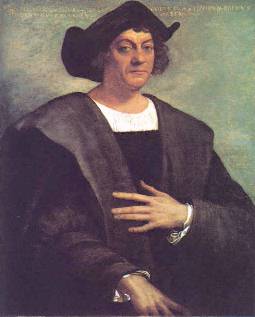Contents
- Introduction
- Preface
- Overview
- Relief Valve
- LECTURE 1: Why We Are In The Dark About Money
- LECTURE 2: The Con
- LECTURE 3: The Vatican-Central to the Origins of Money & Power
-
LECTURE 4: London The Corporation Origins of Opium Drug Smuggling
- Early Barter System
- Trade started with a Sail Boat called a Carrack
- Corporations and Maritime Time Line
- Marine Merchants Timeline
- Levant Company
- London The Corporation
- Church of England The Corporation
- Just Steal It - EIC Commits First Corporate Espionage!
- Matheson & Jardine Families
- The Bankster Families Who Control Opium Smuggling
- Imperialism Rules Enlightened Despotism
- Dutch East India Company
- The Honorable East India Company
- Hong Kong Shanghaied
- Chatham House
- Thuggee the First Fraternity
- Bank of England
- Pirate Bankers
- EIA First Contact With Shanghai China
- The Collapse of the Royal African Company: How Open Trade Trumped the Monopoly
- Shanghai and the First Contact with the West
- Opium - TimeLine
- Opium Trade
- The Opium Wars
- Letter to Opium Drug Smuggling Queen Victoria
- Lecture 4 Objectives and Discussion Questions
- LECTURE 5: U.S. Pirates, Boston Brahmins Opium Drug Smugglers
- LECTURE 6: The Shady Origins Of The Federal Reserve
- LECTURE 7: How The Rich Protect Their Money
- LECTURE 8: How To Protect Your Money From The 1% Predators
- LECTURE 9: Final Thoughts
THE CARRACK SAIL BOAT

The ships of Medieval Europe were powered by sail or oar, or both.It was not until after 200 B.C. that triangular "lateen" sails were adopted in the Mediterranean region. Pioneered by the Arabs possibly as early as 200 B.C., these triangle-shaped sails were slung across the mast to a long, sloping crossbar, and were the earliest example of fore-and-aft sails.
Angling from high above the mast down nearly to the deck, their maneuverability permitted a ship to sail almost into the wind. This ability to "tack" into the wind greatly increased the potential and range of a sailing ship, and proved to be a major breakthrough when combined with the square sail. Together, they produced a vessel capable of conquering the oceans.
The first truly full-rigged ocean capable sailing ship, the carrack.
The Merchant Networks Project
The two writers/researchers behind the Merchant Networks Project are Ken Cozens (in London) and Dan Byrnes (Australia). The Cozens/Byrnes team formed in late 2005 after prolonged e-mail discussions to pursue the idea of historians working on Merchant Networks. Not work on merchants as individuals, more on the networks they are part of ...
The maritime history of Massachusetts, 1783-1860 ([c1921])
Author: Morison, Samuel Eliot, 1887-1976
Subject: Read Online Massachusetts -- Commerce History; Massachusetts -- History
Publisher: Boston Houghton Mifflin
The Old China Book (1903)
Author: N. Husdon Moore
Publisher: Tudor Publishing Company
Language: English
Opium Traders and Their Worlds-Volume One
Opium Traders and Their Worlds examines the opium trade with a detective's investigative approach. The author uses evidence to dismiss many of the false claims commonly held with regard to the so-called "legitimacy" of the Old China trade, presents proof of important figures who were deeply involved in all parts of the world and shows how world events were affected by famous men in opium hierarchies.Lateral contributors to the drug trade include shipbuilders who fashioned their craft to meet needs of the commerce, designing specially built Indiamen, clippers, and "fast crabs."Ms. Kienholz shows how vicious competition in the trade moved players like chess pieces, with winners and losers shifting positions.Her research into the production of the new "opioids" such as oxycodone is an area not previously probed.
CINARC Chinese In Northwest America Research Committee
OPIUM IN THE PACIFIC NORTHWEST 西北角鴉片煙 1850s-1930s
We, the editors, realize that the subject of Chinese opium use in 19th century North America can cause unease and controversy. However, we think it is important, especially in the Pacific Northwest. Many writers still treat opium smoking by Chinese as a moral and even ethnic issue, as if Chinese were somehow more guilty than other people of addiction to opiate drugs. Chinese-American historians have tended to shy away from the subject entirely. Do they feel that it somehow reflects badly on their culture or themselves? Must one keep quiet about one's predecessors' vices, in spite of the horrifying damage that was sometimes caused, in order to validate one's cultural inheritance? We don't think so.
 In the East, China became a major sea power around 1,000 A.D. because of its development of the junk. The term ultimately stems from the Chinese chuán (船, "boat; ship"), also based on and pronounced as [dzuːŋ] (Pe̍h-ōe-jī: chûn) in the Min Nan variant of Chinese, or zhōu (舟), the old word for a sailing vessel.[citation needed] It entered the English language in the 17th century through the Portuguese junco from the Javanese djong.[2] The modern Standard Chinese word for an ocean-going wooden cargo vessel is cáo (艚)
In the East, China became a major sea power around 1,000 A.D. because of its development of the junk. The term ultimately stems from the Chinese chuán (船, "boat; ship"), also based on and pronounced as [dzuːŋ] (Pe̍h-ōe-jī: chûn) in the Min Nan variant of Chinese, or zhōu (舟), the old word for a sailing vessel.[citation needed] It entered the English language in the 17th century through the Portuguese junco from the Javanese djong.[2] The modern Standard Chinese word for an ocean-going wooden cargo vessel is cáo (艚)
Their use of the lugsail, which was shaped like a trapezoid and strengthened by bamboo strips, combined with their invention of the rudder, made these ships one of the most efficient vessels ever to move under sail power. Junks were often five-masted, and the stiffness of their lugsails allowed them to make use of even the slightest gusts of wind.
A crucial problem with Mediterranean ships was that they still employed steering oars. Despite their great size and the ability to sail close haulted, their shallow draft and steering oars gave little resistance to the wind. These ships made a tremendous amount of leeway (drifting with the wind) and could spend several days going nowhere, losing to leeway, what progress they made sailing. A record dated to 1183 by a ship sailing from Sicily reports passing Crete…three times. Needless to say this played havoc with navigation, and was downright dangerous in close waters. As a result the first Mediterranean lighthouse of the period was built in Genoa in 1161.
Marine Paintings and Drawings in the Peabody Essex Museum
The 1% Opium Drug Smuggling Boston Brahmins Pirates
The Old Clipper Days ~ Julian S. Cutler
"When we sold the Heathen nations rum and opium in rolls,
And the Missionaries went along to save their sinful souls."
 Houqua (clipper)
Houqua (clipper)
The Houqua was an early clipper ship with an innovative hull design, built for A.A. Low & Brother in 1844. She sailed in the China Opium trade.
The Houqua was named "in honor of the beloved Canton Hong merchant Houqua, who had died the year before, and with whom the Low brothers had traded with in China for many years.
Houqua, (also spelled Howqua or Hoqua), was the most prominent Hong merchant of the day. He "was to take her delivery in China as a warship on behalf of the Chinese government. However, upon arrival, she was found to be too small, and so she spent her career in merchant service for A.A. Low
Howqua (Chinese: 伍秉鉴; pinyin: Wu Bingjian, Cantonese: Ńg Bẽnkgâm; 1769 – 4 September 1843[2]) was the most important of the Hong merchants in the Thirteen Factories, and the leader of the Canton Cohong - Ewo (怡和). He was once one of the richest men in the world.
Opium Clipper Ship Trade - Chinese Attack on an Opium Clipper
http://www.eraoftheclipperships.com/page8web.html
In 1842, the Opium War came to a end after the signing of the Treaty of Nanking. England now had control of the island of Hong Kong and from this base of operations, opium smuggling grew with each passing year. Sleek new opium clippers were now being built for this highly profitable trade, many of them in Aberdeen, Scotland.
As this market grew following the Opium War, shrewd shippers realized the growing importance of acquiring large fast ships with which to go up against their rivals in this increasingly competitive trade, and to dispatch their ships to Chinese ports every autumn to await the first tea pickings.
Once the tea was in the holds, the great sailing race half way around the world commenced down the South China Sea, past Anjier, across the Indian Ocean, around the Cape of Good Hope, and up the Atlantic to New York.
The Low brothers were early on the scene in China. They were all sons of Seth Low, a drug merchant of Salem who had a dozen sons. Seth Low saw his opportunity as early as 1833, and had made his fortune in the China tea trade and importing such exotic wares as mocha, asafetida, gum arabic, and musk in pods. Like many of the Yankee merchants, the Lows had moved from Salem to New York City, finding it a much more suitable location from which to conduct their business. They were such a numerous clan that someone from Salem, in jest, made up a jingle about them: "Old Low, old Low's son, Never saw so many Lows since the world begun."
Abiel Abbott Low had been in Canton for seven years serving with the merchant firm of Russell & Company. One Low brother after another followed him to Canton to work for the same firm. Abbott had made his fortune by 1840 and returned to New York the following year and continued to conduct his business in New York and established the family firm of A. A. Low & Bros.
Some recollections by Captain Charles P. Low, commending the clipper ships "Houqua," "Jacob Bell," "Samuel Russell," and "N.B. Palmer," in the China trade, 1847-1873.
Copyright By FRANCES LOW PARTRIDGE 1905
This book is dedicated to my wife and to our seven children
 TEACH HISTORY THROUGH SONG
TEACH HISTORY THROUGH SONG
October 12 Columbus Day
Columbus Sails But the stage was now set.
Many Crusaders familiar with the northern cog, would travel to the holy land in an Italian lateen rigged ship. In this cultural melting pot, all of the pieces were in place for the first truly full-rigged ocean capable sailing ship, the carrack.
In 1492 Columbus Sails the Ocean Blue
Around the 1450s, Western Europeans combined the stern-hung rudder with the use of square and lateen sails to produce the deep-hulled carrack -- the first ship capable of making long sea voyages without interruption and thus capable of making voyages of discovery. Sail technology continued to improve and reached its apex with the clipper ships of the 1840s. These long, low ships were sleekly designed for speed and had masts nearly as tall as the keel was long, with every inch covered by sails. By this time, the end was in sight for these as well as the massive, two-masted "brig" which had more than 20 separate square or triangular sails, since steam and iron were soon taking over. Steam and other types of engines signaled the permanent decline of the sail as a primary means of moving a ship, and increasingly sails were used only for pleasure and competition. It was not until 1980 that a ship of any size employed any version of sail. That year, Japan introduced its tanker Shin Aitoku Maru whose computer-controlled sails lowered its fuel consumption by 10 percent (since the main diesel engines could reduce power when the sails were in use).
In 1492 Columbus sailed the ocean blue Story
Maurice Abravanel - American.
Born, Jan. 6, 1903 in Salonika, Greece.
Died, September, 1993.
In 1936 he came to US and conducted the Metropolitan Opera. In 1938 he left the Met to conduct Broadway. In 1949, received a Tony Award for conducting of Regina. 1970, served as a member of the first music panel of the National Endowment for the Arts. 1991, awarded the National Medal of the Arts. Abravanel's family were Sephardic Jews.
He was a descendant of Don Isaac Abravanel, born in 1438, who, as finance minister to Queen Esabella of Spain, arranged funding for the first voyage of Christopher Columbus.